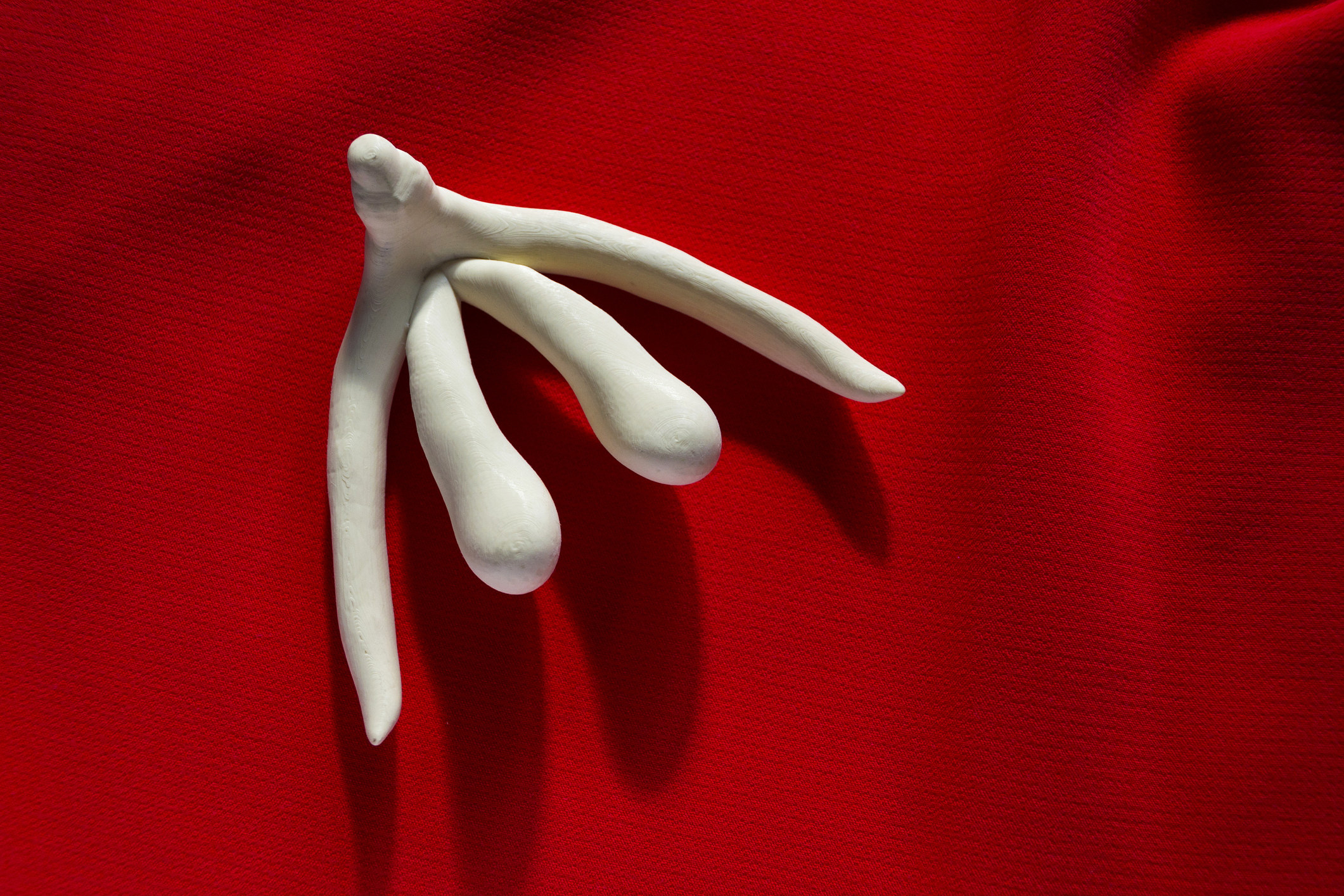
With no purpose other than to provide pure pleasure, the clitoris still seems to be considered one of the more mysterious organs of the body.
Why? We’re not quite sure. The clitoris, after years of being ignored by researchers, is being studied more than in the past, and we know a lot about how it works. But it seems like there are still too many people who don’t know where to find it, what it does, or how to wield body parts or sex toys to get the most fun out of it.
“We aren't talking about the clitoris enough in real life,” said Dr. Jennifer Lincoln, a board-certified OB-GYN in Portland, Oregon, who posts regularly on social media and has 2.8 million followers on TikTok. “When I make TikToks about the clitoris, I get tons of questions because people want to know how their bodies work, and they want to know why they've never been taught this!”
First up: It has no reproductive function whatsoever, but it is responsible for most orgasms in people with vulvas.
Here we explain the unique features of this tiny organ, and by tiny we mean in the same way an iceberg is tiny — it’s bigger than you think, there’s way more happening under the surface than you might suspect, and you can ignore it, but at your peril.
Where is the clitoris?
The most prominent part of the clitoris (the part you can see) is called the glans clitoris and is located toward the top of the vulva, above both the vaginal opening and the urethra, said Rachel Needle, a licensed psychologist in West Palm Beach, Florida, and the codirector of Modern Sex Therapy Institutes, a continuing education provider that trains couples and sex therapists around the world.
Most of it is hidden. “Ninety percent of the clitoris is underneath the skin,” said Dr. Adi Katz, director of gynecology at Lenox Hill Hospital in New York City.
The glans of the clitoris is no more than an inch wide, but the organ extends some 5 inches into the body and blooms into an orchidlike shape. Two petals on either side join in the middle.
“Most people think it's just the tiny part you can see and are amazed to see what the true anatomy of the clitoris is,” said Lincoln, who is also the author of Let's Talk About Down There: An OB-GYN Answers All Your Burning Questions…Without Making You Feel Embarrassed for Asking.
The clitoris is a bundle of nerves
Literally. It has about 8,000 nerve endings, which is more than the tip of the penis and the most of any part of the vulva.
A recent study in the Journal of Neuroscience for the first time pinpointed the exact location in the brain that is activated by clitoral touch: the somatosensory cortex, which processes different sensations. (This area of the brain also appears to be thicker in people who have more sex, possibly specifically due to this stimulation.)
During orgasm, the brain releases a cascade of “feel-good” hormones such as dopamine and oxytocin.
Your clitoris can get erections
In addition to nerves, the clitoris is composed of erectile tissue and blood vessels, much like the penis. In fact, both the penis and clitoris arise from the same embryonic tissue, Katz said. When aroused, the tissue fills with blood and becomes erect. This can also make your labia (the “lips” around the opening of the vagina) enlarge.
As the vulva and labia engorge, they contribute to lubrication inside the vagina, making the vagina ready to be penetrated, if this is the type of sex you are having.
The clitoris may play a role in squirting
Although the clitoris itself doesn’t release any fluid, some (not all) people have glands surrounding the clitoris that can squirt a liquid that seems to be partially composed of urine and other fluids, said Lincoln, who explains how this works in a YouTube video. Some people report that squirting enhances sexual pleasure.
Some researchers believe there may actually be two different processes at play: squirting, when fluid is expelled from the urethra, and a “female ejaculation” which involves thicker fluid released from nearby glands.
Many mammals have a clitoris

For instance, dolphins, like humans, have sex not just to conceive but also to connect with other dolphins, according to a 2022 study.
In these creatures, the clitoris is located near the vaginal opening, which means it’s likely to be stimulated during intercourse.
Female bottlenose dolphins have been known to stimulate each other’s clitorises with their flippers or snouts. Like human clitorises, those of dolphins have plenty of nerves, erectile tissue, and blood vessels, suggesting that the dolphins derive pleasure from the clitoris.
Most orgasms don’t come from vaginal sex
Most people with vaginas do not have orgasms with penetration or vaginal stimulation alone — that works for only about 18.4% of women, according to a survey of US women about sexual pleasure.
A little more than a third (36%) reported that they didn’t need the clitoris to be directly stimulated in order to have an orgasm, but it did feel more pleasurable if it was. About 36% also said they need direct stimulation of the clitoris to have an orgasm.
“For most women, it’s the rubbing motion against the clitoris that will cause an orgasm,” Katz said. “In some women, penetration and movement in the vagina will cause an orgasm, but that’s a minority.”
There’s no one way to have an orgasm
In the US survey, different women preferred different types of touch, location, pressure, and pattern of movement. And there are a number of other reasons why someone might not be able to have an orgasm from vaginal penetration, Needle said.
It could be that more manual stimulation of the clitoris is necessary but also many people need “more comfort or connection with their partner(s), different types of touch and stimulation, the ability to allow themselves to let go, and to be present in the moment,” she said.
The role of the G-spot (Gräfenberg spot), which is an extra-sensitive area inside the vagina, is still being debated. It’s possible that the pleasurable sensation associated with the G-spot could occur because the clitoris is being stimulated through the vaginal wall.
Way too many people fake orgasms
Almost 60% of women participating in a 2019 survey reported having faked orgasms at some point.
More than half (55.4%) of those said they wanted to talk with their partner but didn’t want to hurt their feelings or were embarrassed by the topic. Surprisingly, earlier research found that faking may actually add to sexual pleasure.
Communication can also enhance pleasure. “Our partners are not mind readers,” Needle said. “Don’t be afraid to get specific: lighter, harder, faster, slower, right there, don't stop, etc.”
Some sex positions are better than others when it comes to maximizing pleasure
According to a 2020 study, researchers found that women reported more pleasure when they were on top in a face-to-face position or sitting in a face-to-face position, and less so when in a kneeling or rear-entry position. “Also, you can grind your pelvic bone against your partner to stimulate your clitoris,” Needle said.
Another option? “Try slight alternations in any sexual position to stimulate different areas of your vagina,” she said. “For example, when in the missionary position with your partner on top, put a pillow under your butt, put your legs on your partner’s shoulders and lift your hips up. This will allow your partner to penetrate you more deeply and thrust more easily.”
Masturbation can help you figure out what feels best
And don’t be afraid to mix it up, just like with partnered sex positions.
“If you tend to lie flat on your back, try turning over on your knees and either lean forward on one elbow and use your hand or toy to massage the clit,” suggested Tameca Harris-Jackson, a sex therapist and founder and director of Hope & Serenity Health Services. “Or lean your upper body against a solid surface such as a headboard or wall and, again, use your hand to explore. Using other items, such as straddling a comfortable yet firm pillow, a partner's leg, the arm of a sofa, etc., can all be arousing and enjoyable.”
It can be too sensitive for direct contact
You don’t have to start with the clit and vulva, Harris-Jackson said. “You or others may find massaging breasts, caressing your thighs, or gentle pinches and grabs on other parts of your body are equally arousing and help with added stimulation and arousal before engaging in clit play.”
Remember that your body has to go through several stages before becoming ready for orgasm, with a partner or not. “Take time to allow yourself to become turned on,” Harris-Jackson said. Watch a show that arouses you, read or listen to a book, allow yourself to escape into your own fantasies. Pleasure, including self-pleasure, is a marathon, not a sprint. So give yourself permission to build your desire and arousal.
And when it comes to touching the clit (however you or your partners like to do it), remember that direct contact can be too sensitive for some, Lincoln said. For others, it’s, well, not.
If you have issues with your clitoris and orgasms, it could be a sign of other conditions
A prime example is diabetes.
“The clitoris is an organ that’s very dependent on blood supply — much like the penis — so if you have a problem with the blood vessels, you can have a problem with orgasms,” Katz said. “[Difficulty with orgasms] can be a way that women find out they have some kind of systemic disease that needs to be evaluated.”
Diabetes not only affects the blood supply, it can also damage nerves and prompt hormonal changes both of which can also affect the clitoris and orgasms. Hypertension can also affect the ability to orgasm. High blood sugar can lower your libido, or sex drive.
Your clitoris is part of the genital area, which makes it susceptible to problems affecting any other part of your genitals.
This includes infections and certain cancers and skin conditions, said Needle, who is also a member of the National Coalition for Sexual Health, which published “A Guide to Sexual Concerns and Pleasure.”
So how do you keep your clitoris in prime shape? “A good, healthy lifestyle is good for your whole body, including your clitoris,” Lincoln said. “You don't need to do anything ‘special’ just for your clitoris.”
Orgasms can change as you age
You may have to work harder, or you may not. “For some people, it's actually easier because they no longer worry about risks of pregnancy, may feel more comfortable speaking up and saying what works (and what doesn't), and feel more confident in their bodies,” Lincoln said.
On the other hand, decreasing estrogen levels can cause vaginal dryness, which can make sex or masturbation uncomfortable. (Hormonal changes along with reduced blood supply can also shrink the clitoris.)
One survey of 3,000 people ages 57 to 85 found that the frequency of sexual activity went down with age (73% among respondents ages 57 to 64, 53% among those ages 65 to 74, and 26% among those ages 75 to 85). Thirty-four percent of women in the study reported difficulty having an orgasm, among other issues.
However, that doesn’t mean you can’t have one, or you should stop trying.
“If this is something you're noticing, don't hesitate to reach out to your provider because we have treatments that can definitely help,” Lincoln said.

